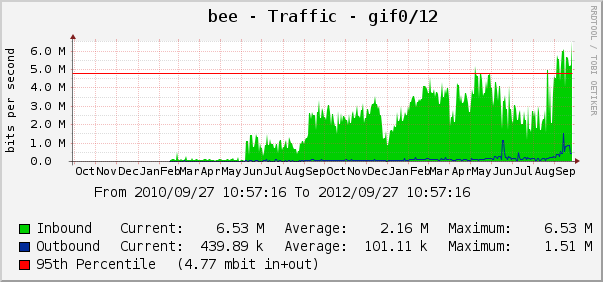IPv6 Traffic Growth Update #2

Here is another update of our IPv6 traffic. Averaged over the last year, the IPv6 traffic is about 5% of the overall Internet traffic we have. This is pretty good given the fact that only some parts of Jacobs' network currently advertises IPv6. In particular, we have no IPv6 in the student dorms (and the graph clearly suggests that students are a major contributor to our Internet traffic - in particular during finals periods).



